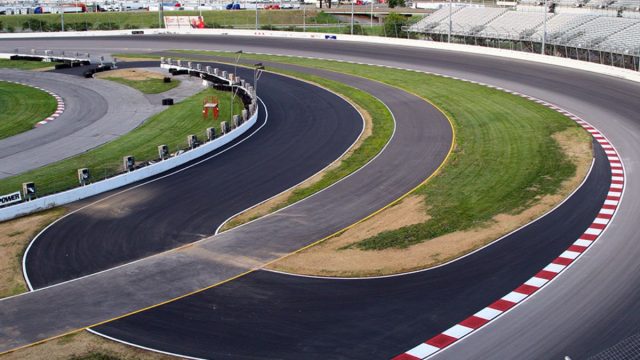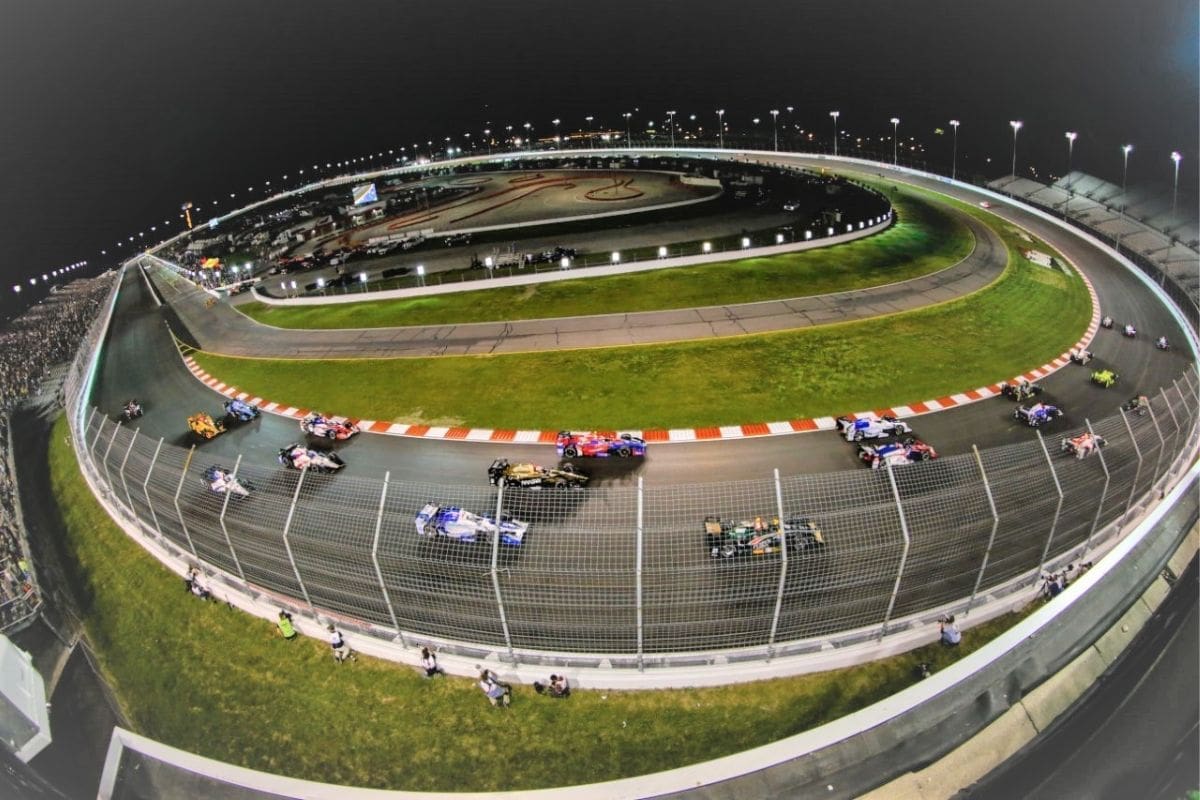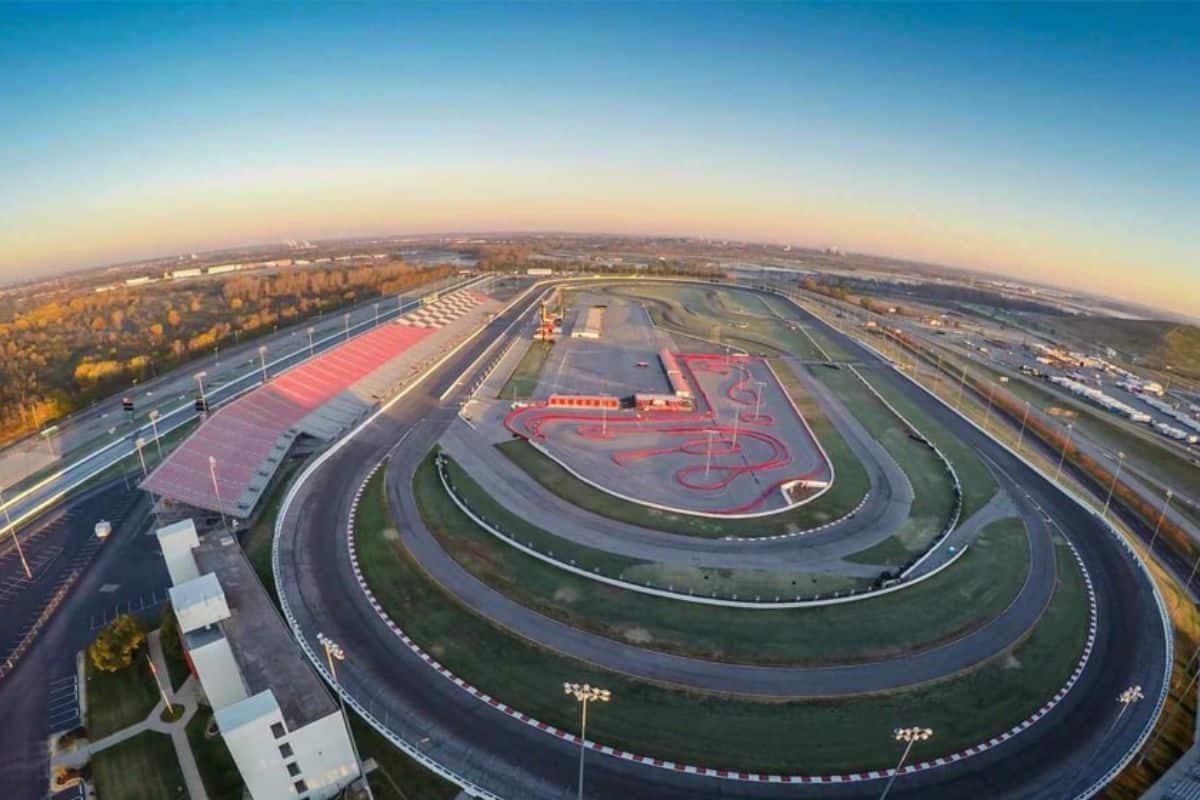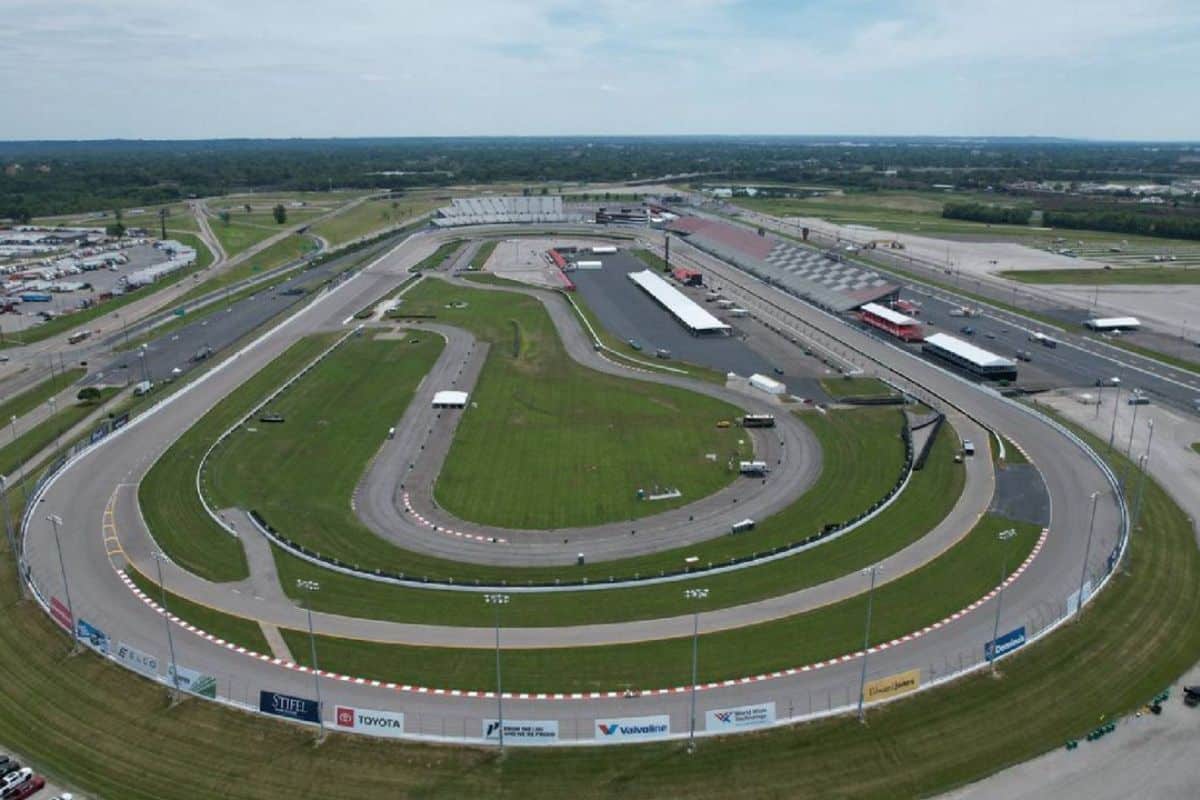Tough Truth About World Wide Technology Raceway: The World Wide Technology Raceway, also known as Gateway Motorsports Park, stands as a crucible of racing excellence, demanding an intricate blend of driver skill and strategic acuity. This 1.250-mile oval track is notorious for its exacting nature, where precision in car control and adaptability under stress are non-negotiable. Crew chiefs face a formidable challenge, as every tactical decision, magnified by limited pit stops and the unpredictability of caution periods, can pivot the race’s outcome. The stakes are exceptionally high, making it imperative to understand how these dynamics shape the symbiotic relationship between driver and team.
Key Highlights
- The 1.250-mile oval track at World Wide Technology Raceway features a unique layout and challenging corners demanding high precision.
- Crew chiefs play a pivotal role, balancing technical precision with real-time strategic agility to optimize car performance.
- Limited pit stops emphasize the significance of each strategic decision, making timing and execution critical.
- Tire strategies, including the choice between four or two tires, significantly impact track position and vehicle condition.
- The track’s unpredictability and intense competition require crew chiefs to showcase diverse and creative strategies.
Upcoming Challenge at Gateway Motorsports Park
The NASCAR Cup Series faces a compelling challenge this weekend at Gateway Motorsports Park, where the 1.250-mile oval presents a formidable challenge for both drivers and crew chiefs. Known for its unique layout and demanding corners, Gateway Motorsports Park, also referred to as World Wide Technology Raceway, requires a blend of precision and adaptability.
The course’s configuration, with its distinct turns and varying banking, pushes drivers to their technical limits, demanding impeccable car control and strategic navigation.
However, the complexity of Gateway extends beyond the driver’s seat. Rudy Fugle, the crew chief for William Byron’s #24 team, highlights that the real challenge lies with the crew chiefs. Their role in configuring the car to handle the track’s idiosyncrasies can greatly influence performance.
The park’s tight turns and long straights necessitate a precise balance between speed and handling, making the crew chief’s setup decisions critical. Fugle, aiming for his maiden win at this track, emphasizes the importance of data analysis and real-time adjustments during the race.
The challenge is compounded by the track’s surface, which can be unforgiving. Teams must consider tire wear and fuel management, as these factors can be decisive in the outcome. The abrasive nature of the track surface means that tire degradation is a constant threat, requiring meticulous planning and keen intuition from the pit box.
Importance of Strategy
Managing the complex requirements of Gateway Motorsports Park depends heavily on the strategic expertise of the crew chiefs, who must make vital in-race decisions that can change the direction of the competition. The low frequency of pit stops at Gateway amplifies the significance of each tactical move, making every decision a potential game-changer. According to a recent report by Speedway Digest, Fugle emphasized the critical role of strategy at this venue, highlighting how key decisions taken during caution periods can alter the race’s outcome.
Crew chiefs are faced with the demanding task of determining the most suitable times for pit stops, which often involves a delicate balance between maintaining track position and ensuring the vehicle is in peak condition. These decisions become even more intricate given the limited opportunities for tire changes and refueling. An ill-timed pit stop can lead to a significant loss of track position, while a well-timed one can provide a crucial advantage.
While drivers provide real-time feedback on the car’s performance and track conditions, the ultimate decision-making authority lies with the crew chiefs. Their ability to interpret data, predict competitor behavior, and adapt to evolving race circumstances is paramount. Each strategic call—whether to pit under a caution, opt for a tire change, or stay out—requires a detailed understanding of the race dynamics and an anticipatory approach to potential scenarios.
Crew Chief’s Challenges
Mastering the intricate demands of World Wide Technology Raceway challenges crew chiefs to balance technical precision with real-time strategic agility. The track’s unique characteristics, including variable banking and asymmetric turns, pose a multi-faceted challenge on race-day decision-makers.
As Fugle articulated, drivers frequently face the trifecta of handling issues: loose in, tight middle, and loose off. This dynamic requires crew chiefs to make prudent choices in car setup adjustments, acknowledging the impossibility of addressing all issues simultaneously.
Drop a ✌️ if you’re ready to see the No. 24 @Valvoline rip it around the track this weekend. pic.twitter.com/z55ZJdkcjE
— Hendrick Motorsports (@TeamHendrick) May 31, 2024
The inherent shortness of the race adds another layer of complexity. Unlike traditional NASCAR events, which often feature numerous pit stops, the World Wide Technology Raceway typically sees only three to four pit stops. This limitation magnifies the importance of each pit strategy decision. Crew chiefs must weigh the benefits of tire changes and fuel strategy against track position, often making split-second calls under challenging circumstances.
Additionally, the unpredictability of caution periods introduces an element of risk management. Fugle’s insight highlights the tense moments when a crew chief must decide whether to pit or stay out under caution. This decision can pivot the race’s outcome, as staying out might preserve track position but compromise tire condition and car performance. Conversely, pitting might ensure fresher tires but potentially lose critical positions on a short track where overtaking is notoriously difficult.
“All drivers will be complaining about three things: loose in, tight middle, and loose off. You have to pick the right thing to make the car go faster, but you can’t fix it all. Strategy will also be a big factor. It’s a really short race, kind of like a truck-or Xfinity-style race. In the past you’ve only seen three, maybe four, pit stops at most. There’s going to be times that the caution comes out and you’re going to have to nervously say to stay out.” – Fugle, William Byron‘s crew chief
Thus, the role of the crew chief at World Wide Technology Raceway extends beyond mechanical expertise. It encompasses strategic foresight, adaptability under challenging circumstances, and a keen understanding of driver feedback. Balancing these factors, crew chiefs work to optimize performance and seize any competitive advantage, ultimately maneuvering through a multitude of challenges in their quest for victory.
William Byron’s Track Record
Mastering the intricate dynamics of World Wide Technology Raceway, William Byron’s track record reflects both the challenges and opportunities that define this demanding venue. The 1.25-mile oval, known for its unique mix of tight corners and high-speed straights, has tested Byron’s racing expertise in notable ways.
In his previous outings at Gateway Motorsports Park, Byron has experienced a spectrum of results, finishing P19 in one race and securing a respectable P8 in another. These results highlight the track’s unforgiving nature and the fine margins that separate success from mediocrity.
Byron’s mixed outcomes at this venue highlight the complexity of maneuvering its distinctive layout. The P19 finish is indicative of the myriad of variables that can disrupt even the most carefully planned race strategies. Conversely, his P8 result demonstrates Byron’s capacity to adapt and compete at a high level when circumstances align favorably. These performances are not merely reflections of Byron’s driving skill but also of the intricate interplay between driver input and team strategy.
The pathway to victory at World Wide Technology Raceway necessitates a symbiotic relationship between the driver and the crew chief. Byron’s ability to secure a win here will likely hinge on taking calculated risks, a facet of racing that can either propel a team to victory or consign them to defeat. The intricate demands of this track make it a crucible for testing the mettle of both driver and crew, with Byron’s previous performances serving as a microcosm of the broader challenges inherent in mastering this formidable circuit.
High Stakes for Crew Chiefs
Mastering the strategic complexities of World Wide Technology Raceway, crew chiefs face high-stakes decisions that can dramatically influence the outcome of the race. The unique demands of this track necessitate sharp expertise and split-second judgment, making every choice a potential game-changer.
As Fugle aptly noted, tire strategy is a double-edged sword. Opting for two right-side tires can either propel a team to victory or relegate them to the back of the pack, depending on the prevailing strategies of their competitors.
“We’ve seen some people take two right-side tires and it work out and then seen it not work for others. That’s one of those decisions that could work out well if enough people do it with you, or you could look like a dummy because no one else did it. It’s a track where you can really look like a hero or a zero as a crew chief.” – Fugle
The variability of these decisions highlights the thin margin for error. When a crew chief decides to take a calculated risk, such as a two-tire change, they must consider not only the immediate benefits but also the potential long-term repercussions. If the majority of teams opt for four tires, a two-tire strategy could lead to rapid degradation and a loss of position, ultimately making the crew chief appear daring rather than inventive.
The race at World Wide Technology Raceway on Sunday will surely display a diverse array of strategies from NASCAR’s brightest minds. Each crew chief must carefully analyze track conditions, competitor behavior, and their driver’s feedback to make informed decisions that could either crown them as a hero or label them as a zero.
This high-stakes environment fosters an atmosphere of intense competition and strategic creativity, where every pit stop, tire choice, and fuel calculation is scrutinized.
News in Brief: Tough Truth About World Wide Technology Raceway
The formidable nature of World Wide Technology Raceway highlights the critical interplay between driver skill and strategic expertise. The 1.250-mile oval necessitates flawless execution from both drivers and crew chiefs, where limited pit stops and unpredictable caution periods heighten the stakes.
As evidenced by the rigorous demands and historical performances, success at this venue epitomizes the essence of racing excellence, reinforcing the indispensable role of calculated team coordination and precise handling in achieving victory.
Our Reader’s Queries
Q. Who owns World Wide Technology Raceway?
A, Curtis Francois owns World Wide Technology Raceway, situated east of downtown St. Louis in Madison, Illinois.
Q. Has NASCAR raced at World Wide Technology Raceway?
A. The Cup Series premiered at WWT Raceway in June 2022. Prior to that, the Xfinity Series competed at the track from 1997 to 2010. Elliott Sadler secured victory in the inaugural race there in 1997. Subsequently, Dale Earnhardt Jr. and Kevin Harvick each clinched back-to-back wins at the track following Sadler’s triumph.
Q. What track is similar to World Wide Technology Raceway?
A. World Wide Technology Raceway features Turns 1 and 2 with traits akin to New Hampshire Motor Speedway, while Turns 3 and 4 resemble those of Phoenix Raceway. The oval’s unique egg shape draws parallels to the layout of the oval at Twin Ring Motegi.



